By 2030, more than 30,700 hectares of rice will meet the criteria.
Mr. Le Van Han, Chairman of Tra Vinh Provincial People's Committee, said: After one year of implementing the Project "Sustainable development of one million hectares of high-quality and low-emission rice cultivation associated with green growth in the Mekong Delta by 2030" (Project), Tra Vinh province has implemented 3 crops (summer-winter 2024, autumn-winter 2024 and winter-spring 2024-2025).
Through the practical application of the production model according to the Project, farmers have reduced production costs from 2.6 to 4 million VND/ha/crop, profits from 31 to 50 million VND/ha/crop (an increase of 5.1 to 7.6 million VND/ha/crop compared to outside the model), 100% of the amount of straw is removed from the field, applying alternating flooding and drying reduces emissions from 40 to 50%.
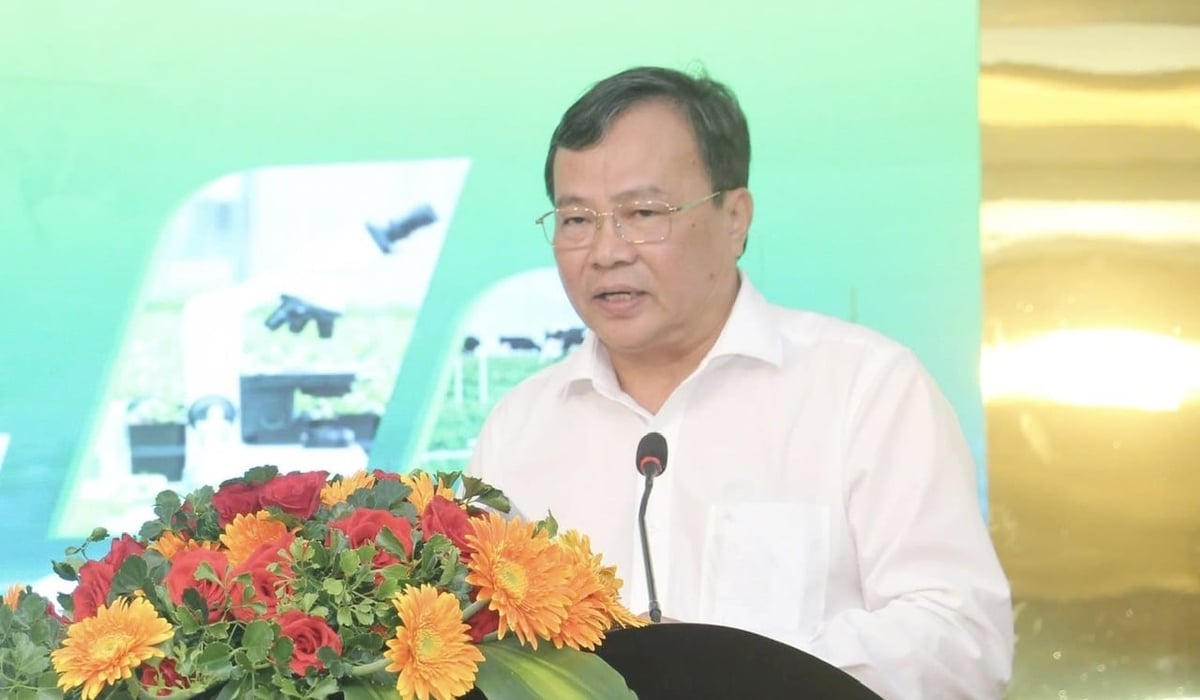
Mr. Le Van Han, Chairman of Tra Vinh Provincial People's Committee. Photo: Le Hung.
In addition to the achieved results, the implementation of the Project in the province also encountered some difficulties. Specifically, Tra Vinh's rice growing area ranks 7th in the country (82,499 hectares). However, the production scale is still small and fragmented, without many large-scale rice growing areas with linkages and cooperation between rice growers, cooperatives and enterprises. Currently, about 20% of the rice growing area in the province participates in cooperative economic forms and cooperatives, but the efficiency is not high.
In addition, Tra Vinh province is outside the Vietnam Sustainable Agricultural Transformation Project (VnSAT), so initially approaching the Project encountered difficulties due to lack of experience and less investment in infrastructure compared to localities participating in the VnSAT Project. Some households are not fully aware of participating in the Project's model, so they are not really determined, still producing according to old habits and have a mindset of waiting for support from the state.
At the same time, the technical infrastructure serving rice production in the province is not yet synchronized, so it does not meet the requirements of applying technical processes to produce high-quality and low-emission rice. Most of the province's rice products have not been branded or labeled, there is a lack of leading enterprises to invest and consume, and there is a lack of machinery and large-scale warehouses to ensure the needs of rice production and preservation.
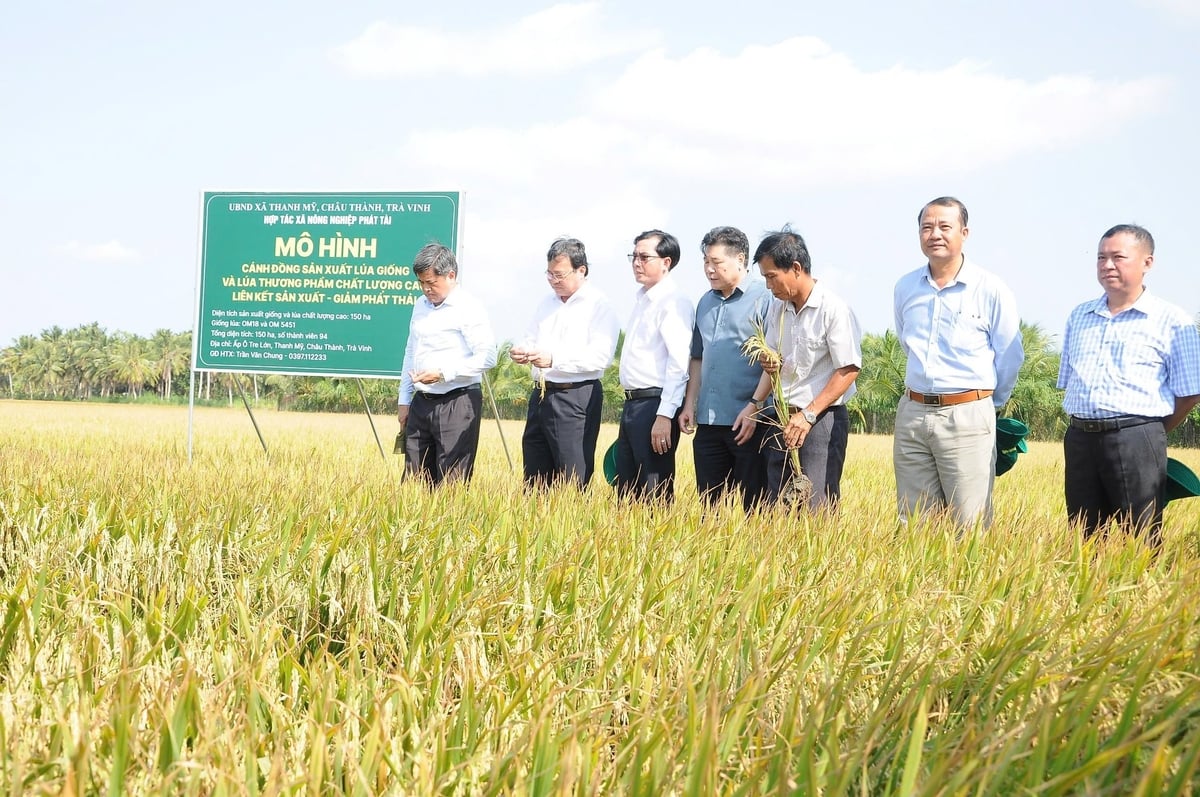
A pilot model of the Project “Sustainable development of one million hectares of high-quality and low-emission rice cultivation associated with green growth in the Mekong Delta by 2030” in Chau Thanh district, Tra Vinh province. Photo: Canh Ky.
Tra Vinh province strives to implement 10,550 hectares by the end of 2025 and 30,736 hectares by the end of 2030 to meet the prescribed criteria. To achieve this task, in the coming time, the province will strengthen propaganda work to change the thinking and awareness of people, cooperatives, and enterprises participating in the implementation of the Project. At the same time, it will promote training and transfer to rice-growing households, cooperatives, and cooperatives to apply high-quality and low-emission rice production processes as well as straw treatment, environmental protection, and climate change response.
In addition, Tra Vinh province will also reorganize production according to cooperative economic models, cooperatives or enterprises to link investment, consume products and by-products in production; Improve and consolidate the activities of community agricultural extension groups in 42 communes registered to participate in the Project. Tra Vinh determines to promote trade, advertise, support the consumption of rice products, support the building of brands and labels of low-carbon rice.
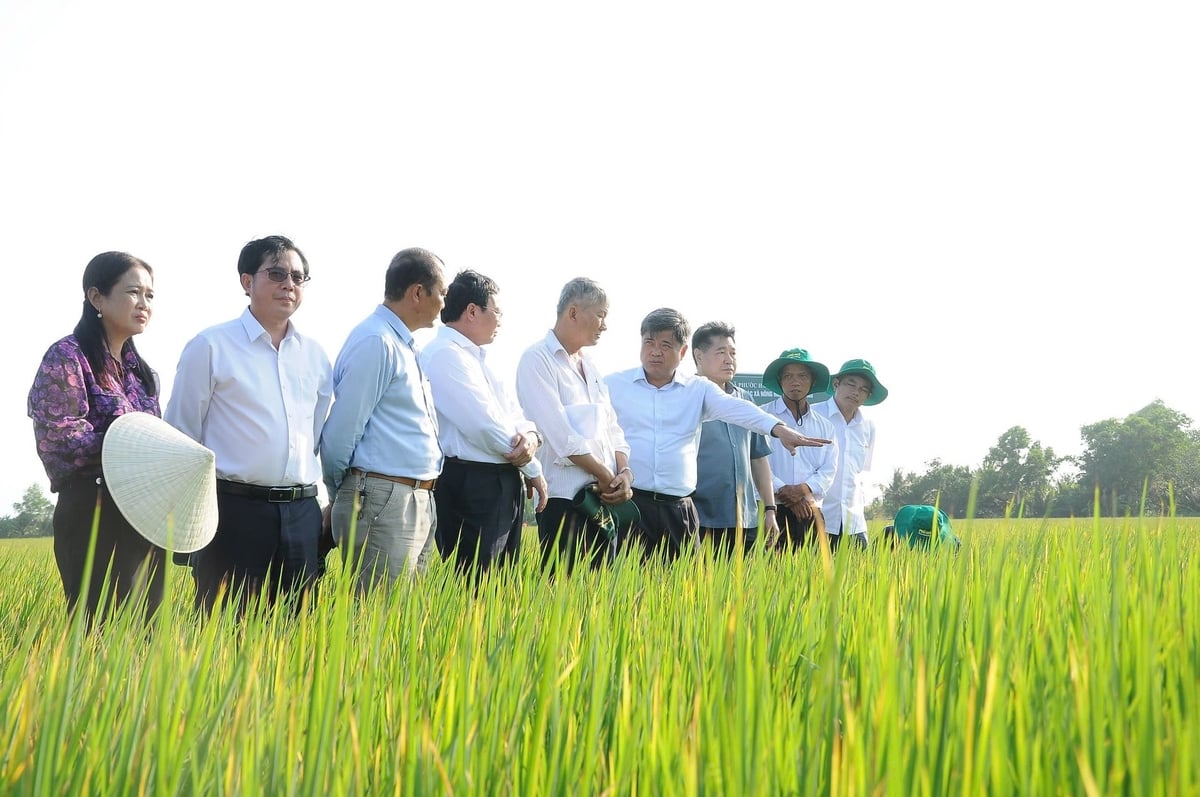
Tra Vinh province strives to complete 10,550 hectares by the end of 2025 and 30,736 hectares by the end of 2030 meeting the prescribed criteria. Photo: Canh Ky.
In particular, for long-term effectiveness, the province continues to invest in the transportation and irrigation systems to ensure adequate conditions for applying high-quality and low-emission rice production; encourages investment in equipment, machinery, warehouses, dryers, and processing plants to serve the production, preservation, and processing of rice.
In the period 2024 - 2030, 30,000 rice-growing households in Vinh Long will participate in the Project.
Mr. Le Van Dung, Deputy Director of the Department of Agriculture and Environment of Vinh Long province, said: Vinh Long province has developed a plan to register to participate in the Project for the period 2024 - 2030 with 20,000 hectares, divided into 4 production areas in 49 communes of 7 districts and towns with about 30,000 rice-growing households.
In 2024, Vinh Long province has integrated through models applying the criteria of the Project (Integrated Plant Health Management (IPHM) model, 1 must 5 reduction model, sustainable rice production model). The results of localities registered to participate in the implementation of the model in phase 1 (2025) are 1,045 hectares. The province has also implemented the contents of the model mainly on reducing sowing density, reducing nitrogen fertilizer, limiting the use of chemical pesticides, increasing the use of biological pesticides, and reducing post-harvest losses.
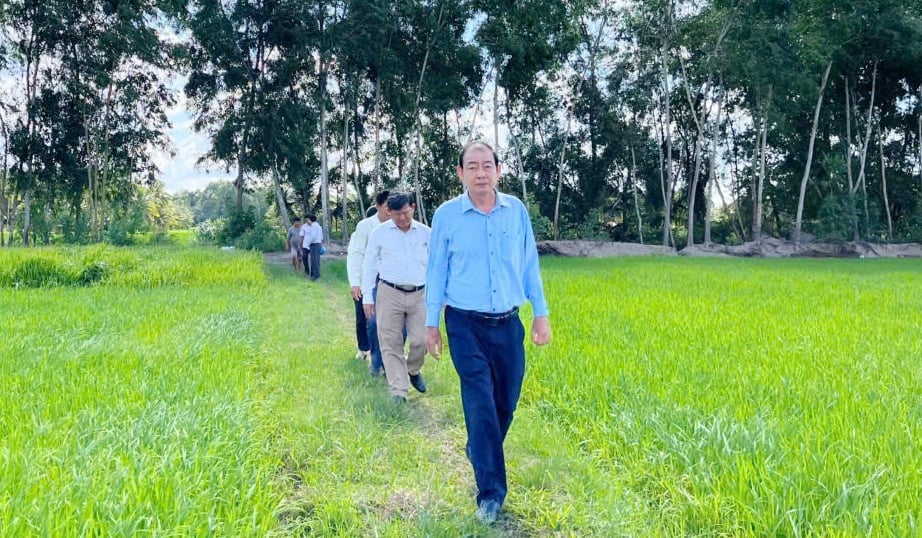
Mr. Le Van Dung, Deputy Director of the Department of Agriculture and Environment of Vinh Long province, inspected the technical process of producing high-quality, low-emission rice according to the Project in some localities in the province. Photo: Le Van Dung.
However, due to the small and scattered rice cultivation area of Vinh Long province, the work of reviewing, evaluating and gathering concentrated production areas is still difficult. According to the survey results of the Survey Team of the Department of Crop Production, to select the emission measurement model (pilot), the irrigation system operating to serve alternating flooding and drying in some places still does not meet the requirements.
The reason is that up to now, Vinh Long has focused on investing in closed large dike blocks with an area of 400 hectares or more, controlling irrigation water to meet production and people's needs. However, in these dike blocks, residential houses, gardens, and fields are interspersed, so they do not meet the technical requirements of the Project.
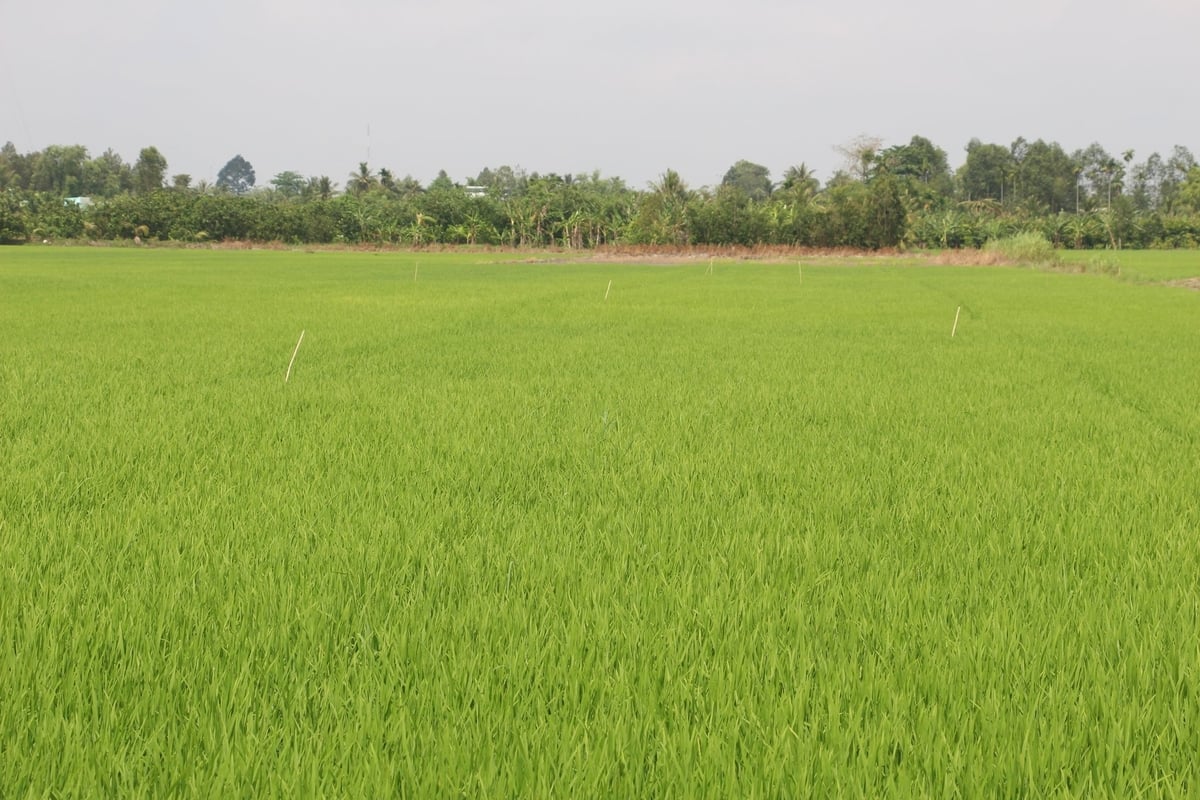
Implementing the Project "Sustainable development of one million hectares of high-quality and low-emission rice cultivation associated with green growth in the Mekong Delta by 2030", Vinh Long province aims to have 20,000 hectares of rice cultivation by 2030 according to the Project and divide it into 4 production areas in 49 communes of 7 districts and towns with about 30,000 participating households. Photo: Le Hung.
To improve the effectiveness of the Project, in the coming time, Vinh Long province will step up propaganda work to encourage and attract organizations, individuals and farmers to participate in the Project, form concentrated production areas, and gradually perfect the criteria for high-quality rice production, low emissions associated with green growth.
At the same time, gradually improve production infrastructure, production techniques, organize production and consumption market linkages, organize training, transfer to rice-growing households and cooperatives sustainable farming measures, straw treatment measures, knowledge of environmental protection, response to climate change, knowledge of management, business, market, and digital transformation.
Vinh Long province encourages farmers to apply techniques to reduce chemical fertilizers, increase the use of organic fertilizers, and apply water-saving production techniques - alternating flooding and drying. Strengthen agricultural extension training and technology transfer for developing low-emission rice production, with priority given to capacity building for community agricultural extension organizations.
In addition, rice growing areas will be organized into cooperatives, cooperative groups or farmer organizations, encouraging businesses to participate in the Project to sign contracts with cooperatives and production households to provide quality inputs. Provide technical support and purchase output products for rice growing households. Organize a pilot implementation combined with measurement and assessment reports as a basis for granting carbon credits to areas that have applied low-emission rice cultivation processes, aiming at the domestic and foreign carbon credit market.
Source: https://nongnghiep.vn/nhin-lai-de-an-1-trieu-hecta-sau-mot-nam-o-tra-vinh-va-vinh-long-d746915.html




![[Photo] National conference to disseminate and implement Resolution No. 66-NQ/TW and Resolution No. 68-NQ/TW of the Politburo](https://vphoto.vietnam.vn/thumb/1200x675/vietnam/resource/IMAGE/2025/5/18/adf666b9303a4213998b395b05234b6a)


![[Photo] General Secretary To Lam visits exhibition of achievements in private economic development](https://vphoto.vietnam.vn/thumb/1200x675/vietnam/resource/IMAGE/2025/5/18/1809dc545f214a86911fe2d2d0fde2e8)


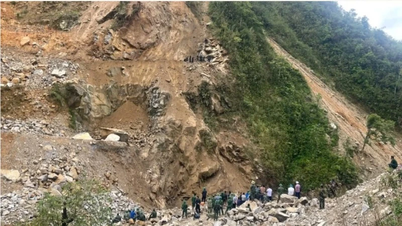

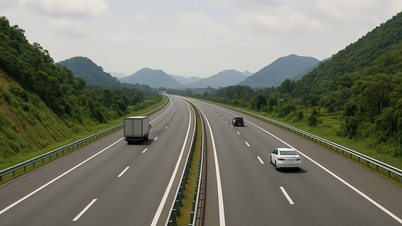
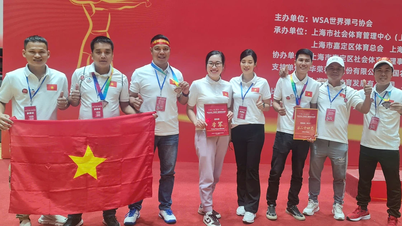
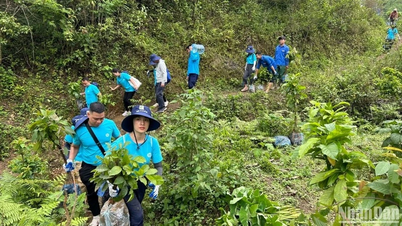
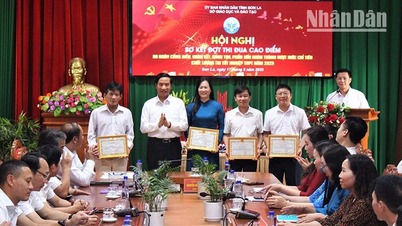







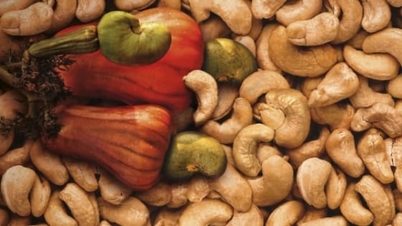
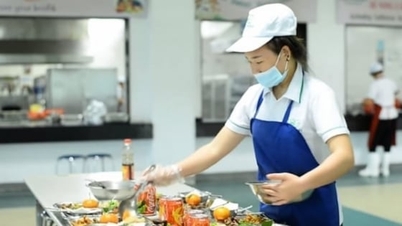
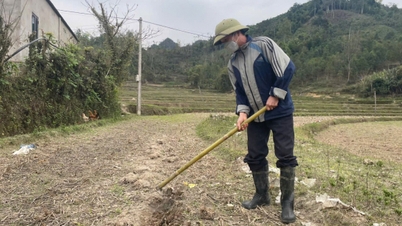
![[Photo] Ready for the top competitions of Vietnamese table tennis](https://vphoto.vietnam.vn/thumb/1200x675/vietnam/resource/IMAGE/2025/5/18/9c547c497c5a4ade8f98c8e7d44f5a41)
















































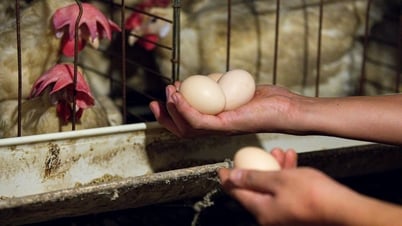

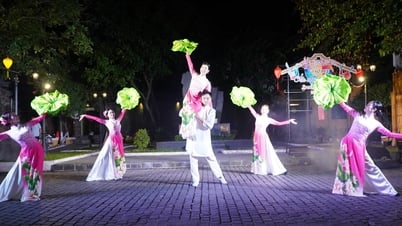



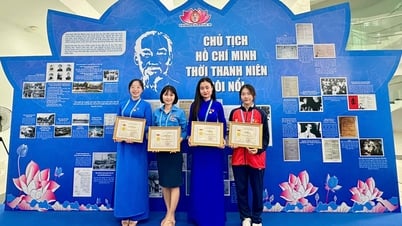










Comment (0)